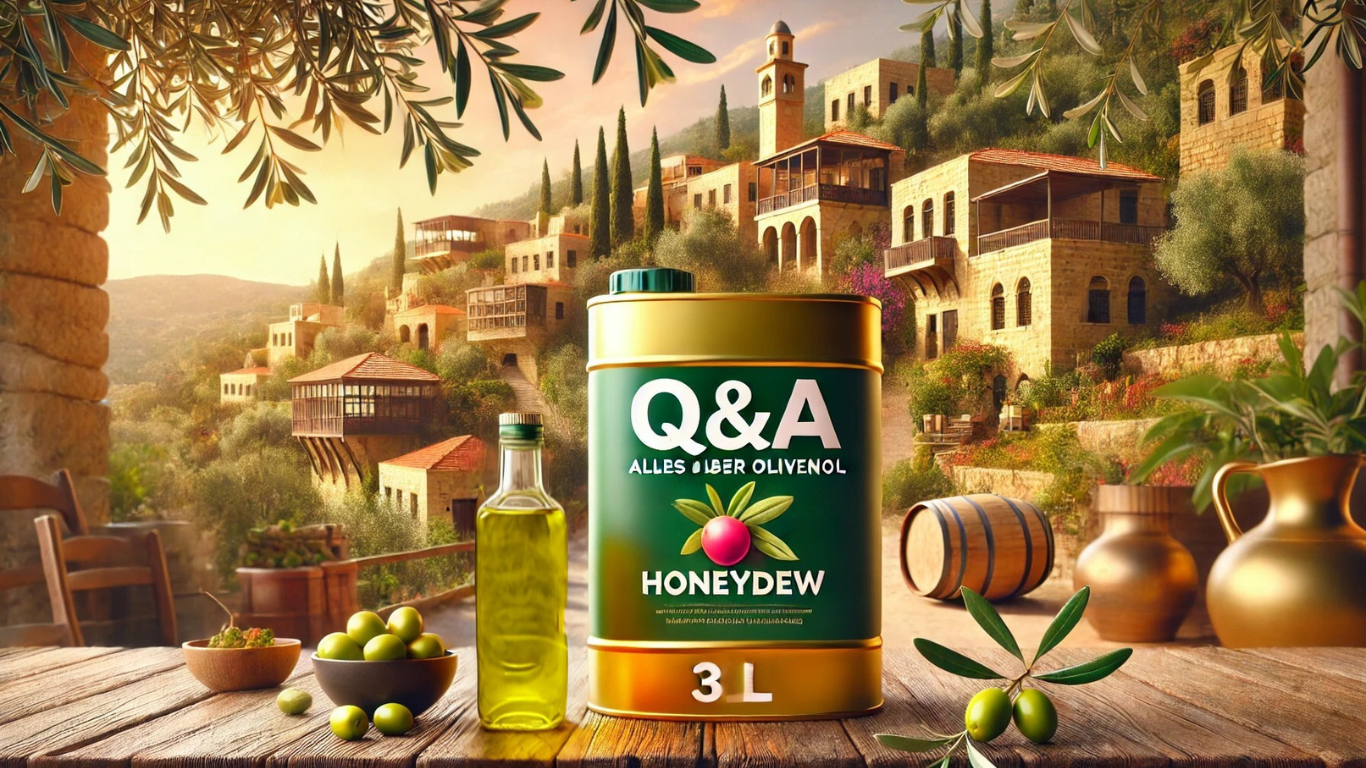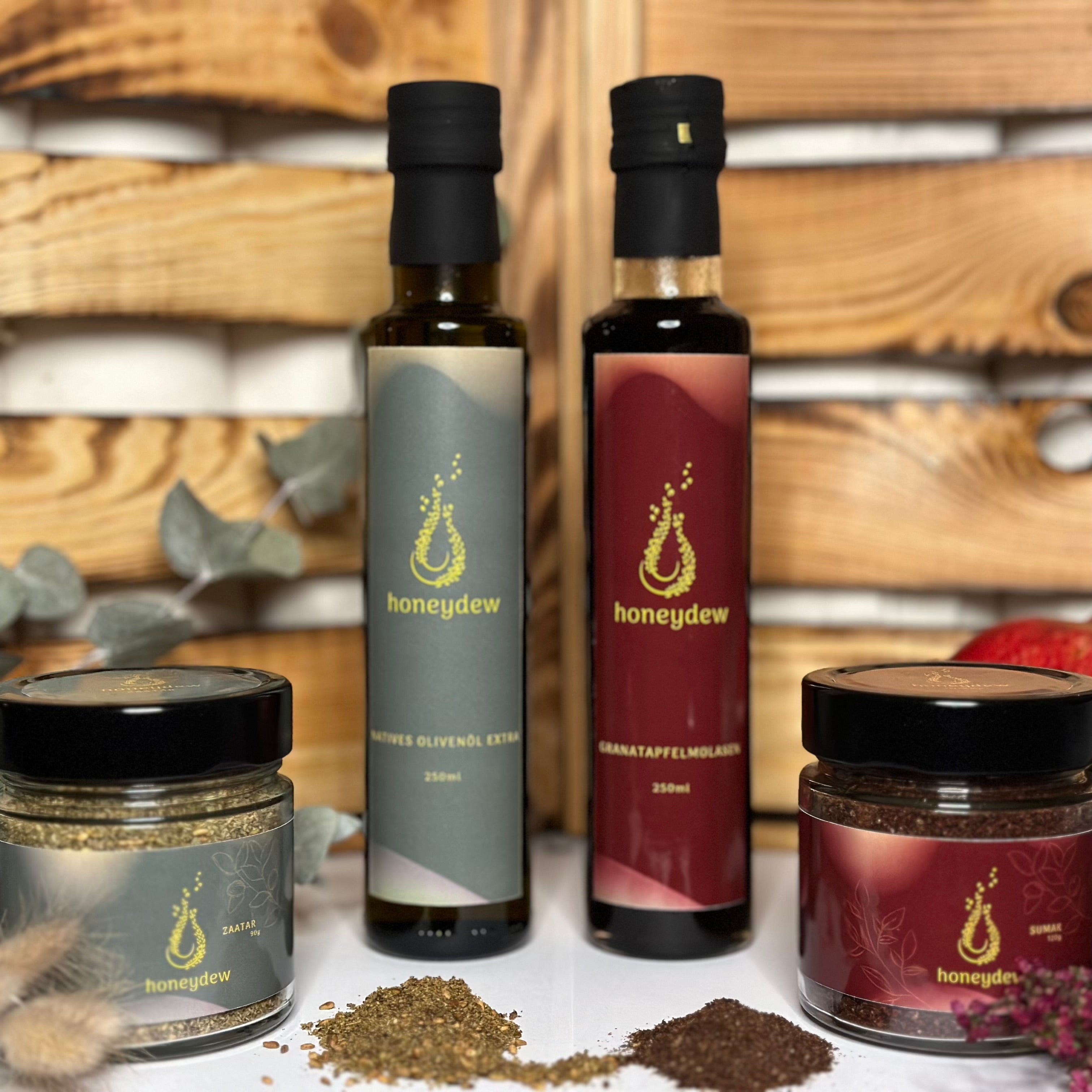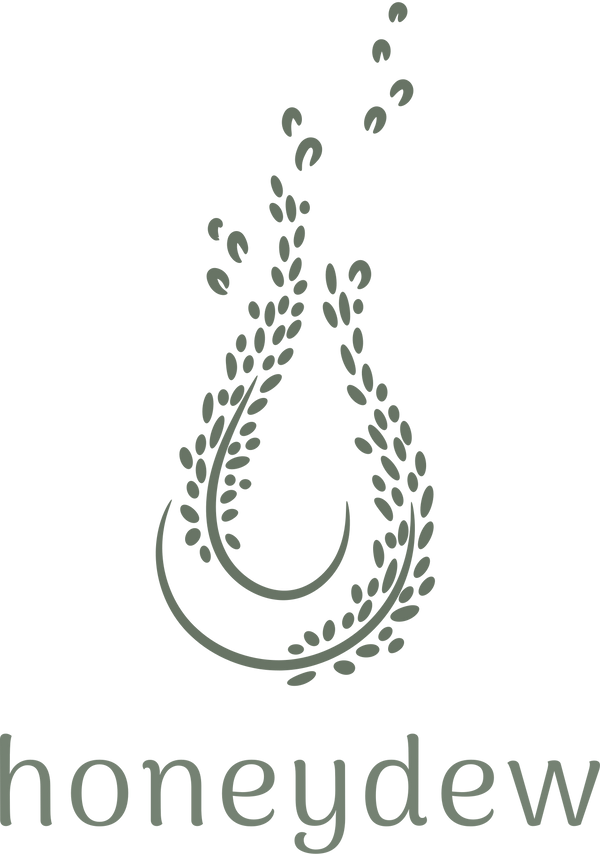
Important Olive Oil Knowledge
What You Should Know About Olive Oil
When are Olives harvested?
In Lebanon, olives are typically harvested between October and December. The exact timing depends on the variety and the desired ripeness of the olives. For high-quality extra virgin olive oil, the fruits are usually harvested early, while still green or slightly violet, to ensure an intense aroma and high nutrient content.
At Honeydew, November is the ideal time to harvest our olives to guarantee their full, rich flavor
What does cold-pressed olive oil actually mean?
"Cold press" refers to a method of extracting oil from olives without using high heat or chemicals. The olives are crushed, and the oil is extracted mechanically at a temperature below 27°C (80°F). This process helps preserve the natural flavors, nutrients, and antioxidants, resulting in high-quality olive oil, often labeled as extra virgin.
For olive oil, "cold pressed" and "extra virgin" hold the same meaning. If you see "extra virgin olive oil" on the label, it means the oil is cold pressed.
What is the difference between olive oil and extra virgin olive oil?
The difference between "olive oil" and "extra virgin olive oil" lies in their production process, quality, and taste:
Olive Oil
- Type: Refined or pure olive oil.
- Production: Typically a blend of refined olive oil (processed with heat or chemicals to remove impurities) and a small amount of virgin olive oil for flavor.
- Flavor: Neutral taste, less fruity or aromatic.
- Smoke Point: Higher, making it suitable for high-heat cooking.
- Nutrients: Contains fewer natural antioxidants and nutrients due to refining.
Extra Virgin Olive Oil
- Type: The highest quality olive oil.
- Production: Cold-pressed from fresh olives without the use of heat or chemicals.
- Flavor: Rich, fruity, and aromatic with a slight peppery finish.
- Smoke Point: Lower, better for drizzling, salads, or low-heat cooking.
- Nutrients: Packed with antioxidants, polyphenols, and healthy fats.
In short, extra virgin olive oil is unrefined and retains its natural flavors and health benefits, whereas regular olive oil is refined and better suited for cooking.
At what temperatures are they suitable for heating and frying?
Here are the approximate smoke points of different olive oils, which are essential for determining the right temperature for frying and heating:
Extra Virgin Olive Oil (like honeydew)
- Smoke Point: ~190°C (375°F)
- Best For: Frying at low to medium heat, drizzling, dressings, and dips.
Virgin Olive Oil
Smoke Point: ~210°C (410°F)
Best For: Frying at medium heat, sautéing, and light heating.
Pure/Refined Olive Oil
- Smoke Point: ~240°C (465°F)
- Best For: Frying at high heat, deep frying, roasting, and grilling.
General Cooking Temperature Guidelines:
- Sautéing: ~120–180°C (250–350°F)
- Frying: ~175–190°C (350–375°F)
- Baking: ~180–200°C (350–400°F)
Always keep the smoke point of the oil in mind to avoid burning and to preserve flavor and nutrients when heating or frying.
What is the significance of olive oil acidity and how is it tested?
At honeydew we have been maintaining an acidity level of < 0.3% for years!
But what does that actually mean?
The acidity level of olive oil is a critical measure of its quality and freshness. Here's its significance and how it is tested:
Significance of Olive Oil Acidity
- Quality Indicator: Acidity reflects the amount of free fatty acids present, which indicates how much the oil has degraded. Lower acidity levels mean higher-quality oil.
- Extra Virgin Olive Oil: Must have an acidity of less than 0.8%.
- Virgin Olive Oil: Acidity ranges between 0.8% and 2%.
- Taste and Flavor: High acidity can lead to a rancid or unpleasant taste, while low acidity contributes to a smoother, fresher flavor.
- Freshness: Acidity increases when olives are damaged, overripe, or processed poorly, signaling a lack of freshness.
- Health Benefits: Lower acidity oils often retain more antioxidants and beneficial compounds.
How is Acidity Tested?
- Chemical Analysis: Acidity is measured in a laboratory using a process called titration, which determines the percentage of free fatty acids (oleic acid) in the oil.
** Sensory Testing gives no indication of the acidity.
**Label Verification: Acidity should typically be listed on the product label for high-quality olive oils, especially extra virgin.
What should I consider when choosing a high-quality olive oil?
➡️When selecting high-quality olive oil, you should focus on taste and quality.
- Taste: Olive oil generally falls into two main categories:
- Quality: The most critical aspect is ensuring the oil is pure and has a low acidity level (<0.8%). Low acidity indicates that the oil was produced from fresh olives and with a clean process, qualifying it as "cold-pressed extra virgin." However, not all olive oils labeled "Extra Virgin" or "Bio" meet these standards. Many brands lack transparency, particularly about acidity levels or pesticide residues.
Even within Europe, regulations and audits for these labels can be inconsistent.
To ensure you’re getting the best, look for:
- Transparent brands: Those that provide test results showing low acidity and minimal pesticide levels.
- Non-EU sources: Olive oils from countries like Lebanon often undergo stricter testing before being imported to Europe.
For example we at honeydew, offer family-made olive oil sourced from Lebanon with an acidity of <0.3% (extremely rare). Their production process is powered by solar energy, and they openly share test results proving minimal pesticide residues. Additionally, they support children with Down syndrome through their revenues—a perfect blend of quality, sustainability, and social responsibility.
What harmful substances can be found in olive oil?
Olive oil can contain up to five different types of harmful substances, depending on farming practices, processing methods, and storage conditions. The most relevant include:
- Pesticide residues
- Mineral oil residues (MOAH & MOSH)
- Plasticizers (e.g. phthalates)
- Polycyclic aromatic hydrocarbons (PAHs)
- Heavy metals (e.g. lead, cadmium)
🔎Pesticide residues and mineral oil components – especially MOAH and MOSH – are particularly critical.
🛢️ What are MOAH and MOSH – and why are they concerning?
MOAH (Mineral Oil Aromatic Hydrocarbons) and MOSH (Mineral Oil Saturated Hydrocarbons) are types of mineral oil compounds that can accidentally enter olive oil during production – for example, through lubricants, contaminated packaging materials, or improper storage.
- MOAH are considered especially worrying because they may contain carcinogenic (cancer-causing) compounds. Even small amounts are considered potentially unsafe by the European Food Safety Authority (EFSA).
- MOSH can accumulate in the human body, particularly in the liver and spleen. While their long-term effects are not fully understood, rising concern has led to stricter controls.
✅ How can you protect yourself from these harmful substances?
- Choose organic olive oil, ideally with independent certifications or seals (e.g. EU Organic, Stiftung Warentest, or Öko-Test recommendations).
- Look for protected designation of origin (PDO) labels, which often come with stricter quality regulations.
- Buy cold-pressed extra virgin olive oil in dark glass bottles – this protects against light and oxidation.
👉 Top tip: Look for brands that publicly share their contaminant test results and stand behind the purity of their products. A great example is Honeydew – a small family-run business from Lebanon. Since we produce outside the EU, we are subject to stricter scrutiny and testing compared to many EU-based producers.
Our lab test results are fully transparent and clearly demonstrate the high purity and safety of our olive oil, free from harmful residues.
Does packaging matter when choosing olive oil?
Yes, absolutely — the packaging of olive oil plays a critical role in maintaining its quality, freshness, and nutritional value.
🚫 Never buy olive oil in plastic or clear bottles.
Why? Because light and plastic rapidly degrade olive oil — leading to oxidation, nutrient loss, and even rancidity.
Once exposed to light or reactive materials like plastic, olive oil quickly loses its health benefits, vibrant flavor, and aromatic complexity.
✅ Better option: Choose oils in dark glass bottles, which block harmful light and help preserve the oil’s quality. Always store olive oil in a cool, dark place.
🌟 Best option: Select a tin canister — it offers full protection from light and air, ensuring maximum freshness, antioxidants, and flavor.
Important: Avoid oils sold in clear glass or plastic bottles, as these allow light and oxygen to accelerate degradation.
But packaging is just one part of the story.
A truly high-quality olive oil will always provide clear label information, such as:
- Harvest date
- Acidity level (must be under 0.8% to qualify as extra virgin)
- Origin (preferably single-origin or estate-grown)
- Certification details
These factors are much stronger indicators of quality than organic labels alone.
At Honeydew, we take these standards seriously — using only dark glass and tin packaging to guarantee that you receive olive oil as fresh, pure, and nutrient-rich as nature intended. 🌿✨
-
 This is Bob :)Culture & Mission
This is Bob :)Culture & Mission -
 🇱🇧 ProductsGo to Products
🇱🇧 ProductsGo to Products -
 This is us!Lear more
This is us!Lear more
Our Rewards Program!
- Welcome Discount 10% 🎁
Get 10% off instantly when you join by entering your email below 👇
(we promise no spam emails)! 😊📧
⬇️ - Share the Joy 🤝
Invite your friends with your personal referral code. They’ll receive 10% off their first order.
⬇️ - Earn Rewards 🛍️
For every friend who makes a purchase, you’ll get 10% off your next order – up to a total of 40%!👇



